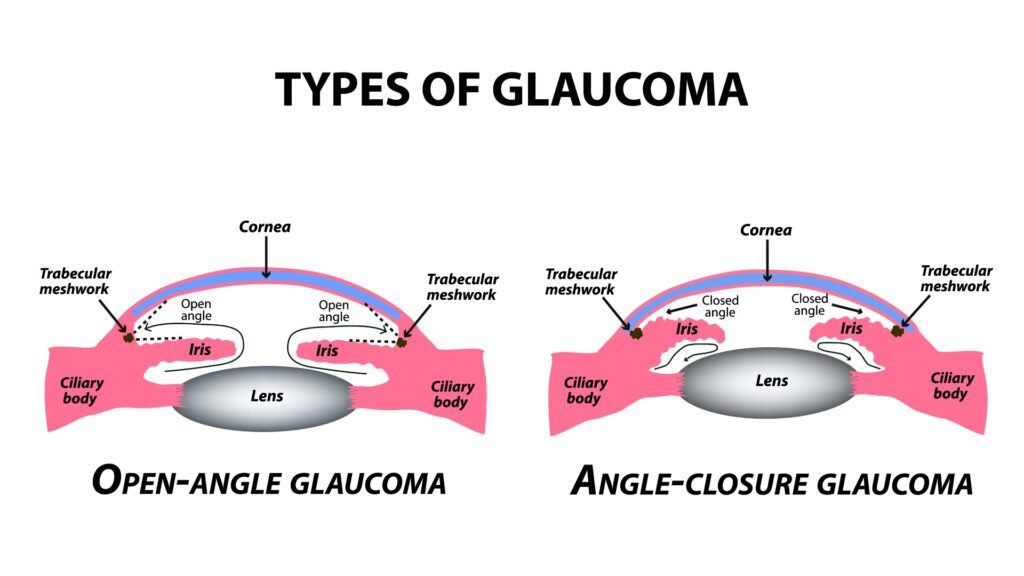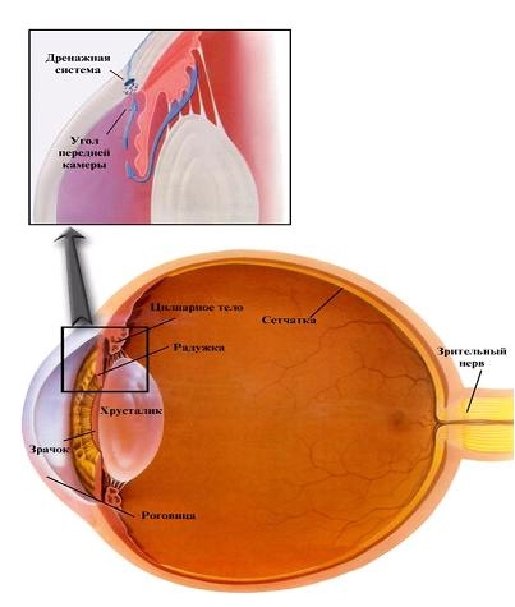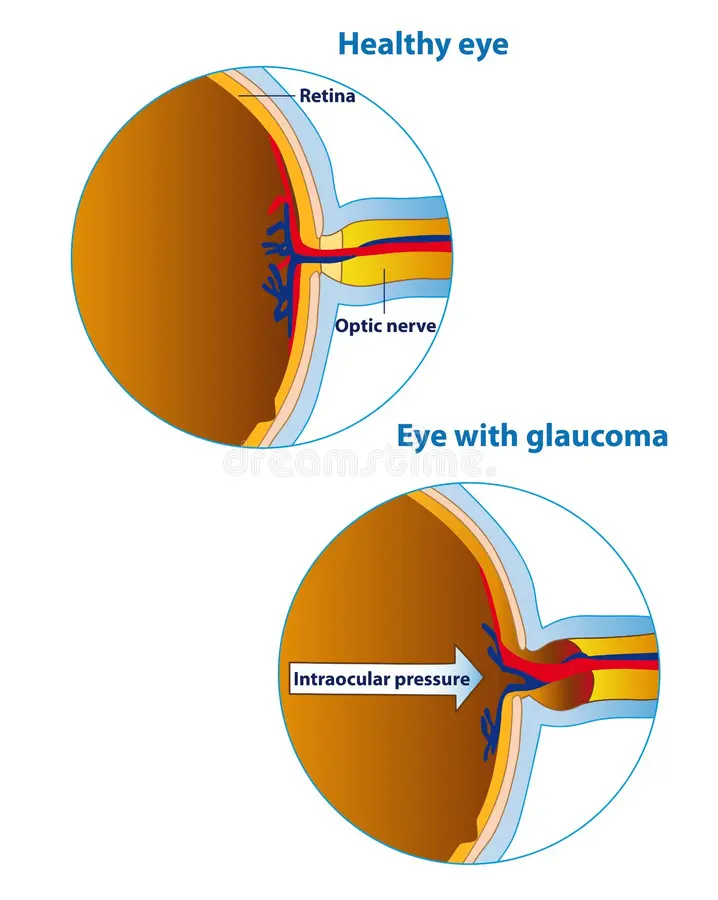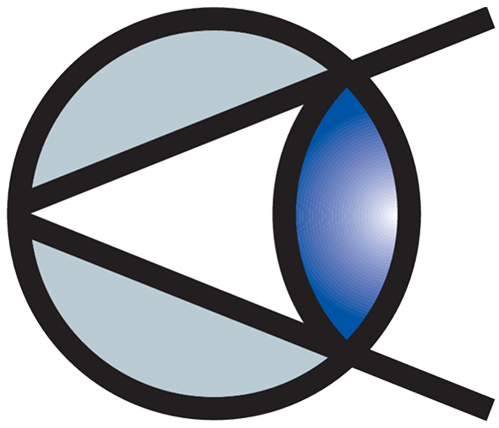Glaucoma: Understanding the Silent Thief of Sight
What Is Glaucoma?
Glaucoma is a group of eye diseases that damage the optic nerve, which is vital for good vision. This damage is often caused by abnormally high pressure in the eye (intraocular pressure). Glaucoma is one of the leading causes of blindness for people over the age of 60. However, blindness from glaucoma can often be prevented with early treatment.


Types of Glaucoma
1. Primary Open-Angle Glaucoma: The most common form, where the eye’s drainage canals become clogged over time, leading to increased eye pressure.
2. Angle-Closure Glaucoma: Occurs when the iris bulges forward to narrow or block the drainage angle formed by the cornea and iris, leading to a sudden increase in eye pressure.
3. Normal-Tension Glaucoma: Optic nerve damage occurs even though eye pressure is within the normal range.
4. Congenital Glaucoma: A rare form present at birth, resulting from abnormal
development of the eye’s drainage system.
5. Secondary Glaucoma: Develops as a result of another eye condition, injury, or disease.
Causes and Risk Factors
Symptoms
Glaucoma is often called the "silent thief of sight; because it typically has no symptoms in its early stages. As the disease progresses:
● Open-Angle Glaucoma: Gradual loss of peripheral vision, usually in both eyes.
● Angle-Closure Glaucoma: Sudden onset of severe eye pain, nausea, vomiting, blurred vision, and halos around lights.
Diagnosis
Early detection through regular eye exams is crucial. Tests may include:
● Tonometry: Measures intraocular pressure.
● Ophthalmoscopy: Examines the shape and color of the optic nerve.
● Perimetry: Tests the complete field of vision.
● Gonioscopy: Inspects the drainage angle of the eye.
● Pachymetry: Measures the thickness of the cornea.
Treatment Options
While damage from glaucoma cannot be reversed, treatment can prevent further vision loss.
1. Medications
● Prescription Eye Drops: Decrease eye pressure by improving drainage or reducing fluid production.
2. Laser Therapy
● Trabeculoplasty: For open-angle glaucoma, improves drainage through the trabecular meshwork.
● Iridotomy: For angle-closure glaucoma, creates a small hole in the iris to improve fluid flow.
3. Surgery
● Trabeculectomy: Creates a new drainage pathway for fluid.
● Drainage Implants: Inserts a small tube to help drain fluid.
At leading institutions like the Bascom Palmer Eye Institute and the Wilmer Eye Institute, advanced surgical techniques and personalized treatment plans are employed to manage glaucoma effectively.


When to Seek Medical Attention
Immediate medical attention is necessary if you experience:
● Sudden vision loss
● Severe eye pain
● Nausea and vomiting
● Blurred vision
● Halos around lights
Regular comprehensive eye exams are essential, especially if you’re over 60 or have risk factors for glaucoma.




